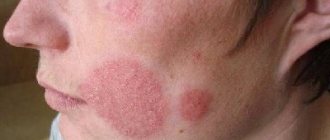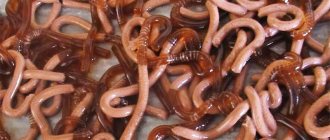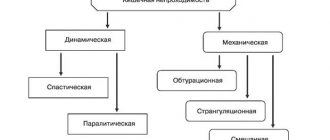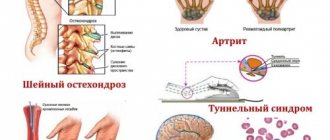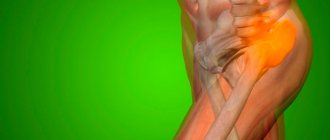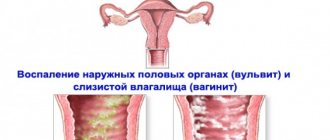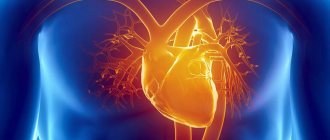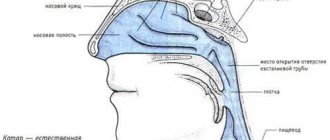Brain diseases are one of the complex pathologies that cannot always be controlled. This important organ is responsible for all processes in the body. Even a minor malfunction of the brain significantly changes the patient’s lifestyle. What is epilepsy, what does such a disorder of consciousness lead to, and how to provide first aid for an epileptic seizure?
Brain diseases are one of the complex pathologies for which it is important to provide assistance.
Features of the disease
Epileptics have increased brain activity associated with electrical impulses. In different parts of the organ, a disorder occurs, manifested by specific attacks - epileptic seizures. In the general clinical picture, various mental disorders are observed; they define a group of symptoms.
In different parts of the organ, a disorder occurs, manifested by specific attacks - epileptic seizures.
Manifestations of epilepsy are varied, have a broad classification, and occur with or without seizures. All this can negatively affect the human body, so help for epilepsy should be provided on time.
How to treat epilepsy
If a person experiences seizures, experts prescribe long-term use of medications that reduce the likelihood of seizure activity. The patient’s life activity depends on the regularity of taking medications.
Gabapentin helps with epilepsy, reducing the feeling of anxiety that occurs due to alcohol abuse, while reducing the craving for alcohol. Taking Finlepsin, Phenobarbital or Clonazepam prevents the risk of attacks and reduces pain.
General strengthening complexes are prescribed. For alcoholic epilepsy, treatment at home can be carried out after basic therapy in a hospital and prescriptions from the attending physician. It is recommended to take drugs that reduce the perception of alcohol (Sonapax, Phenazepam), or specialized drugs Bromocriptine and Livedin. Patients are treated under the strict supervision of a physician.
Symptomatic manifestations
The manifestations of an epileptic seizure in an adult and a child are different. Signs in young patients are not always detected early. In most cases, parents notice a disturbance of consciousness during the transition from one form of epilepsy to another. In other cases, epileptic seizures develop according to the standard algorithm of actions.
Before epilepsy, mild dizziness and sometimes auditory or visual hallucinations appear.
- The previous condition is characterized by mild dizziness, sometimes accompanied by auditory or visual hallucinations.
- After loss of consciousness, convulsions develop that affect all muscle groups or individual areas, and breathing is impaired.
- Convulsions are uncontrollable; during loss of consciousness, the risk of biting the tongue and bloody saliva flowing into the respiratory system increases.
- Seizures cause greater stress on the cardiovascular system, which leads to changes in heart rhythm. Possible release of vomit.
A form of epilepsy with the absence of seizures is accompanied by a slight loss of consciousness, the person’s eyelids tremble, and the tongue sinks.
The most complex symptoms include status epilepticus. Convulsions alternate, and the person remains unconscious. It is critical and requires emergency treatment for an epileptic seizure.
Symptoms of the disease: Jacksonian attacks
Taking into account the peculiarities of the formation of epilepsy, the variety of causes that cause it, as well as the individuality of the reactions of each specific organism to certain stimuli, the signs and manifestations of the disease are very specific and individual in nature for each patient.
Depending on which part of the brain is damaged, a person may experience:
- movement disorders;
- increased or decreased muscle tone;
- impaired speech abilities;
- disorders of mental processes and reactions.
In patients with Jacksonian attacks, increasing impulsive irritation covers one specific area of the brain, without spreading to neighboring ones. The reaction, accordingly, extends to a specific muscle group.
The attack is characterized by short-term psychomotor disorders, the person remains conscious, but it is confused, he loses contact with the outside world and people. At the same time, the patient is not aware of the appearance of his disorder and rejects attempts to help. After a couple of minutes, the attack ends and the condition returns to normal.
Muscle activity is characterized by convulsive twitching or numbness of the hand, leg or foot. Further, the spasm can turn into a general seizure - a large generalized seizure.
A grand mal seizure is a sequential change of several phases:
- warning signs of a seizure;
- tonic seizures;
- clonic seizures;
- stupor;
- sleep.
Precursors of an attack appear as an anxious state that grips the patient. The focus of pathological activity gradually grows.
Tonic convulsions are a condition when all the muscles tense sharply, the head involuntarily throws back, the patient cannot stand on his feet and falls to the floor. His body arches. There may be cessation of breathing and a bluish face. This phase lasts up to 30 seconds.
During clonic convulsions, the muscles of the body begin to contract with a certain rhythm. The patient's salivation increases in the form of foam coming from the mouth. The stage lasts about 5 minutes. Then breathing is gradually restored.
During stupor, the focus of pathological activity is subjected to sharp inhibition. The muscles relax, and the person may involuntarily pass feces and urine. In this state, the patient loses consciousness and loss of reflexes occurs. After about half an hour the stage ends. The epileptic goes into a state of sleep.
What to do if you have an epileptic attack?
Convulsions often cause fear in others. From the outside, the epileptic looks unnatural, but it is at this moment that he needs support. To alleviate a person’s condition, it is necessary to perform first aid measures for epilepsy. This will prevent possible complications.
First aid for adults
Emergency treatment for epilepsy can begin shortly before the attack. For many people around them, seizures begin suddenly, but this is a misconception. The patient's pupils dilate, he becomes anxious, and his movements contain short-term muscle contractions. Behavior becomes active and irritable, reflexes and reactions are significantly dulled.
If you suspect an attack:
- the patient is protected from objects that can cause injury;
- prepare a soft cushion from available materials and place it under the head;
- free the neck from a tight collar, tie and other things;
- if convulsions begin indoors, open windows and doors to increase access to fresh air.
During an epileptic attack, first aid includes several stages. It is necessary to remain calm and quickly respond to the situation. If all recommendations are followed, the epileptic will not be able to cause unconscious harm to himself.
A patient with epilepsy is placed on his side and a soft cushion is placed.
- You need to be nearby throughout the seizure. The assistant inspects the space in search of nearby objects that threaten the person if he falls. Furniture and other items are moved away.
- It is better to record the duration of the seizure in order to later provide this information to a specialist at a medical institution.
- The patient is lowered, placed on his side and a soft cushion is placed. Holding an epileptic by force during seizures is dangerous, as it leads to injury.
- To avoid clenching the jaws, a cushion made of fabric or other thing is placed in the mouth. Hard objects are contraindicated; they can burst from muscle tension.
First aid for a child
If a child's skin turns blue and breathing has stopped, artificial ventilation is required.
First aid for epilepsy in children is provided in the same order as in an adult. When convulsions occur, the child is walked around from behind and his head is secured to avoid a strong blow. During convulsions, the child is forced to lie on his side. Clothing that restricts movement and limits oxygen access is removed, unbuttoned or torn.
When closing the teeth, the patient's mouth is not opened. When relaxing, place a towel or a bundle of fabric in it. If a child's skin turns blue and breathing has stopped, artificial ventilation is required. Do not give any medications during seizures.
When is surgical treatment chosen?
In some cases, epilepsy can only be cured through surgery. Indicators for the operation are:
- Mesial-temporal sclerosis;
- Frequent atonic non-convulsive seizures;
- Loss of consciousness during a partial seizure with secondary generalization;
- Manifestation of partial seizures with the previous state of the aura.
The tumor causing the formation of the disease is eliminated surgically. This method can cure the disease completely. After it, the attacks disappear forever.
Some types of disease, such as benign epilepsy, are not recorded in adults. This type occurs only in children, and as they grow older, the process stops without medical intervention. Some doctors consider epilepsy a chronic neurological disease with progressive severity and recurrence of seizures, leading to irreparable disorders.
Practice shows that the course of epilepsy is not always progressive. The attacks disappear, and the person’s mental abilities remain normal.
The question of whether it is possible to get rid of epilepsy forever can be answered ambiguously.
The probability of a complete cure is high, but in some severe cases this is impossible. Severe cases include:
- epileptic encephalopathy in a child;
- serious brain damage;
- meningoencephalitis.
Important factors influencing the outcome of treatment are also:
- age at the time of recording the first attack;
- the nature of the attacks;
- psychointellectual position of the patient.
The encouraging prognosis is supported by:
- improperly organized therapeutic activities at home;
- delayed treatment;
- asthenic characteristics of a person;
- social factors.
Organized in the context of the treatment of neurological problems. The key to success is early diagnosis.
Therapeutic therapy should be long-term; after the attacks disappear, the patient should take special medications for a certain time, gradually reducing the dose. The patient should follow a diet, rest and work regimen.
The choice of method is made on the basis of the main pathogenetic circumstances of the occurrence of epileptic seizures.
The nature of the course of the disease is associated with the location of the convulsive focus, the protective and compensatory abilities of the body, and from external circumstances.
Therapeutic therapy includes:
- The use of antiepileptic drugs that are aimed at relieving seizures in patients;
- Introduction of a ketogenic diet, aimed at the active formation and burning of fats instead of carbohydrates.
Therapy is carried out under the supervision of a doctor. Possible side effects include:
- constipation and dehydration;
- psycho-emotional problems;
- growth retardation in a child, provoked by an increase in the percentage of lactic acid in the blood;
- formation of kidney stones.
Treatment with traditional methods is also used as an aid.
The use of mistletoe leaves is considered effective, but not flowers or berries, they are poisonous. The plant helps restore nerve cells and increase body tone.
The leaves are poured with alcohol and left for 10 days. Take in the morning, 4 drops for 15 days. You should take a break for 15 days, then take an alcoholic tincture of rosea radiola.
After the end of the epileptic seizure
After providing first aid for epilepsy, the time is checked again and the patient is reassured. If necessary, help wash away the vomit. As long as the tongue is in good shape, there is no risk of its root sinking. But when the patient recovers from convulsions or falls asleep, it is necessary to wrap the tongue with cloth.
When is a medical emergency required?
- At the first attack, hospitalization of the patient is desirable. He will need a thorough examination and initial monitoring.
- The seizure resulted in injury - a blow, a cut, a severe concussion.
- The duration of seizures ranges from 5 minutes or more.
- Repeated seizure after a short time.
- Deterioration of the patient's condition, intensification of the syndrome even after a course of antiepileptic treatment.
In what cases should you call an ambulance?
After the seizure ends, the person gradually begins to come to his senses. He cannot be left alone during this period. The patient should be placed in the lateral position. If the attack took place on the street, and a crowd of curious people gathered around, they should be asked to disperse so that the patient does not feel significant discomfort from increased attention.
When a person tries to stand up and walk on his own legs, he must be supported and not let go alone, since he may still have residual cramps for the next 15 minutes. In general, 15 minutes is enough for the patient’s condition to return to normal. Patients with epilepsy usually know which medications and when they need to take after an attack, so it is impossible to force the patient or forcefully “push” medications into a person.
Coffee, spicy and salty foods can trigger a recurrent attack, so they should not be offered.
After an attack, the patient may experience drowsiness, therefore, if possible, he needs to be provided with conditions for rest and escorted to his home or medical facility.
An epileptic attack is an unpleasant, but not fatal, manifestation of the disease, and, most often, it does not require mandatory medical intervention. However, in some cases it is necessary to urgently call an ambulance or transport the victim to the hospital.
Medical assistance should be provided to a person if the attack lasts more than 3 minutes, and the person is not breathing during this time. An ambulance is called if a seizure occurs in children, pregnant women, the elderly, if breathing after a seizure has not been restored, if an involuntary injury occurs during an attack, or when the seizures have ended, but the patient is still unconscious.
If water gets into the respiratory tract, it can lead to impaired respiratory function - in this case, he will definitely need the help of doctors.
The principle of action for providing assistance to a patient with epilepsy should be as follows:
- There is no need to panic - such an attack will not pose a threat to the patient if he is given proper assistance.
- Look around to see if there are any objects that could injure a person. If there are any, move them to the side.
- It is also necessary to note the time of the onset of the attack to assess its duration.
- Free the patient from restrictive items of clothing - tie, belt, etc.
- The victim should place something soft under his head to protect him from hitting the floor or asphalt.
- Turn the victim onto his or her side to prevent vomit or foam from entering the respiratory tract.
- In cases where a person has bitten his tongue, his lower jaw should be pulled back with a scarf or a piece of dense fabric.
- During an attack, in some cases the patient experiences a short-term cessation of breathing. Therefore, it is necessary to monitor his pulse.
How to provide first aid for epilepsy
Epileptic seizures in patients with this disease occur periodically, so they themselves know the whole principle of action after such cases. But in some cases, calling an ambulance is mandatory.
- If the attack lasts 3 minutes or more. Convulsive seizures negatively affect the condition of brain cells, destroying them and leading to irreversible phenomena in it.
- The patient receives significant injuries during an attack.
- The person recovered from the attack, but his respiratory function was not restored.
- The convulsions have stopped, but the person does not regain consciousness.
- Getting into the lungs and respiratory tract of vomit, saliva, foam.
- Primary case with the occurrence of an attack.
- The attack happened to a pregnant woman.
- The patient also has a history of diabetes mellitus.
- The attack occurs in a child or an elderly person.
If an epileptic attack lasts more than 3 minutes, you need to call an ambulance
Limit the victim's exposure to the crowd and ask bystanders to step aside so the person can breathe. Explain to him, without going into details, what happened and reassure him that nothing terrible happened.
First aid for epilepsy helps to avoid serious consequences, but after the seizure stops, the person also needs the help of others. When recovering from an attack, the patient requires psychological help. Before the doctors arrive, it is important to ensure psychological comfort and the person is in a comfortable position. After an attack, patients do not remember the events that occurred, so it is important to remain calm when interacting with them.
Residual effects after seizures can last up to 15 minutes. In case of a prolonged attack lasting more than 3 minutes, you must call an ambulance. In addition, the help of specialists is necessary when a patient is injured, water enters the lungs, or during the first epileptic attack.
Emergency care for epilepsy is an important undertaking. However, after an attack, the patient needs careful examination and treatment. Diagnosis of epilepsy is carried out in the neurology clinic of the Yusupov Hospital, equipped with European equipment.
Maintenance therapy and regular monitoring by neurologists do not prevent people with epilepsy from leading a full life. However, every person needs to know how to provide help for epilepsy if an attack occurs in a relative, colleague or passerby. You can make an appointment with a neurologist by calling: Yusupov Hospital.
Neurologist, Doctor of Medical Sciences
A small reminder for epileptics
Epileptics need full sleep; sleep rhythm disturbances and sudden awakenings are not allowed. To correct this, you will need to change the operating mode. Restricted sleep leads to seizures.
Epileptics need full sleep; sleep rhythm disturbances and sudden awakenings are not allowed.
As for nutrition, it should be balanced and contain vitamins and minerals. Only for severe types of epilepsy is a low-carbohydrate diet recommended. Changes in metabolism during some types of fasting lead to a decrease in the number of attacks. The diet is not used as a one-sided therapy; it is contraindicated in chronic pathologies and in children.
The patient is required to follow safety rules that are associated with limiting situations that lead to injury. Epileptics should avoid walking at high levels, near large bodies of water, open fire and near transport.
To ensure that first aid for epilepsy attacks is provided on time, you need to tell everyone around you about your condition - colleagues, fellow students, friends. Information about the disease is not hidden when applying for a job, since a sudden attack can negatively affect future work.
About 15% of patients suffer from convulsive syndrome when spending a long time in front of a computer or TV. This is triggered by the rhythmic flickering of light when the patient is highly sensitive to light.
Patients with epilepsy have significant limitations in choosing a job. Many jobs that involve risk or maintaining complex equipment are not available. But with the help of regular treatment, patients can receive a decent education and become socially stronger in the team.
How to suspect the possibility of a seizure?
If the patient has suffered from epileptic seizures before, his family probably knows how to behave in this situation. First aid should be provided as accurately and quickly as possible.
The main warning signs of an attack include:
- increased irritability;
- change in habitual behavior (excessive activity, drowsiness);
- dilated pupils;
- short-term attacks of muscle twitching;
- lack of reaction to everything that happens around;
- in rare cases - anxiety, tearfulness.
